dCS is not a company that releases new products often unless they can make a significant upgrade in overall performance. The Bartók was dCS’s first entry into the high-end headphone market designed with dCS’s famous Ring DAC it was a successful product for dCS. The Headphone community received it well and I enjoyed my time with it during my review (located here) and was sad to see it leave. Not to rest on their laurels, dCS spent two years in designing the new Lina System, a Modular three-piece design that includes a separate Headphone Amplifier, Ring DAC, and Master Clock as a step up from the Bartók. Designed for ultimate listening performance the Lina System can be purchased as individual units or as an entire system, while aesthetically, the Lina’s modern and sleek contemporary design will work well in any home or office setup.
The new system includes a Network Streaming DAC, a Class AB Headphone Amplifier, and a Grade 1 Master Clock, designed specifically for headphone listeners who want the highest listening experience. Lina’s ability to drive a wide range of headphones even the most demanding planar effortlessly puts it at the head of the class. Lina is built to the highest standards using the highest quality components and designed to work as a stack so it can be fit into any setting and look beautiful.
The setup for me was a snap using all the supplied cables I was able to simply plug the USB cable into my MacBook Pro and I was off and running, using my Roon Library which includes 8TB of high-resolution files as well as Qobuz and Tidal to stream both MQA and high-resolution files.
Headphones used in this review included the Dan Clark Audio STEALTH, the Grado PS2000E, the Audeze LCD5, the Meze Elite, and the Focal Utopia. Cables from Cardas and Moon Audio were also used in various configurations.
Lina
Headphone Amplifier
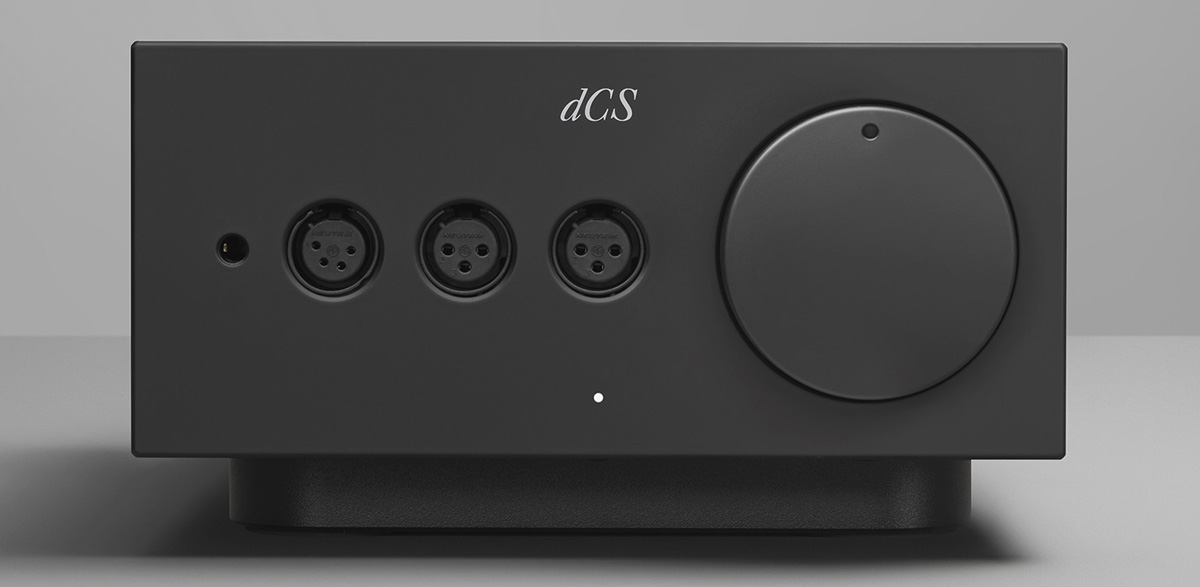
The amplifier is a ground-up design using a high-powered (2 watts at 30 ohms) balanced output high-bias Class AB DC servo system design with a low output impedance, less than 0.090 ohms, to provide the best possible sound with a wide range of headphones. The amplifier offers both balanced inputs and single-ended inputs, though using balanced inputs allowed for the ultimate in sound reproduction. Being the first-ever dCS amplifier, dCS pulled out all the stops to make this an amplifier worthy of the dCS name including the arrangement of internal components, the design of its circuitry, electronics, and billet aluminum chassis (selected for its excellent acoustic and electromagnetic properties) that is battleship strong and reduces any risk of electromagnetic interference. dCS’s focus in designing the Lina Headphone Amplifier is “Perfect Neutrality”, meaning the amplifier should be as transparent as possible and not influence the sound of the headphone itself while providing an extremely low a noise floor and dynamic range without coloration.

The layout is fairly straightforward and designed to offer maximum flexibility including three separate headphone outputs on the front panel: 1 x dual 3-pin balanced XLR (separate right and left channel), 1 x single 4-pin balanced XLR, and 1 x single 1/4’’ (6.35mm) headphone jack, alongside of the volume control and input status light (WHITE: Balanced XLR; this is recommended when connecting the unit to the LINA DAC; BLUE: Buffered, balanced XLR; MAGENTA: Unbalanced RCA). The adjustable gain switch is on the underside of the unit beneath the volume knob as is the power/input select button.
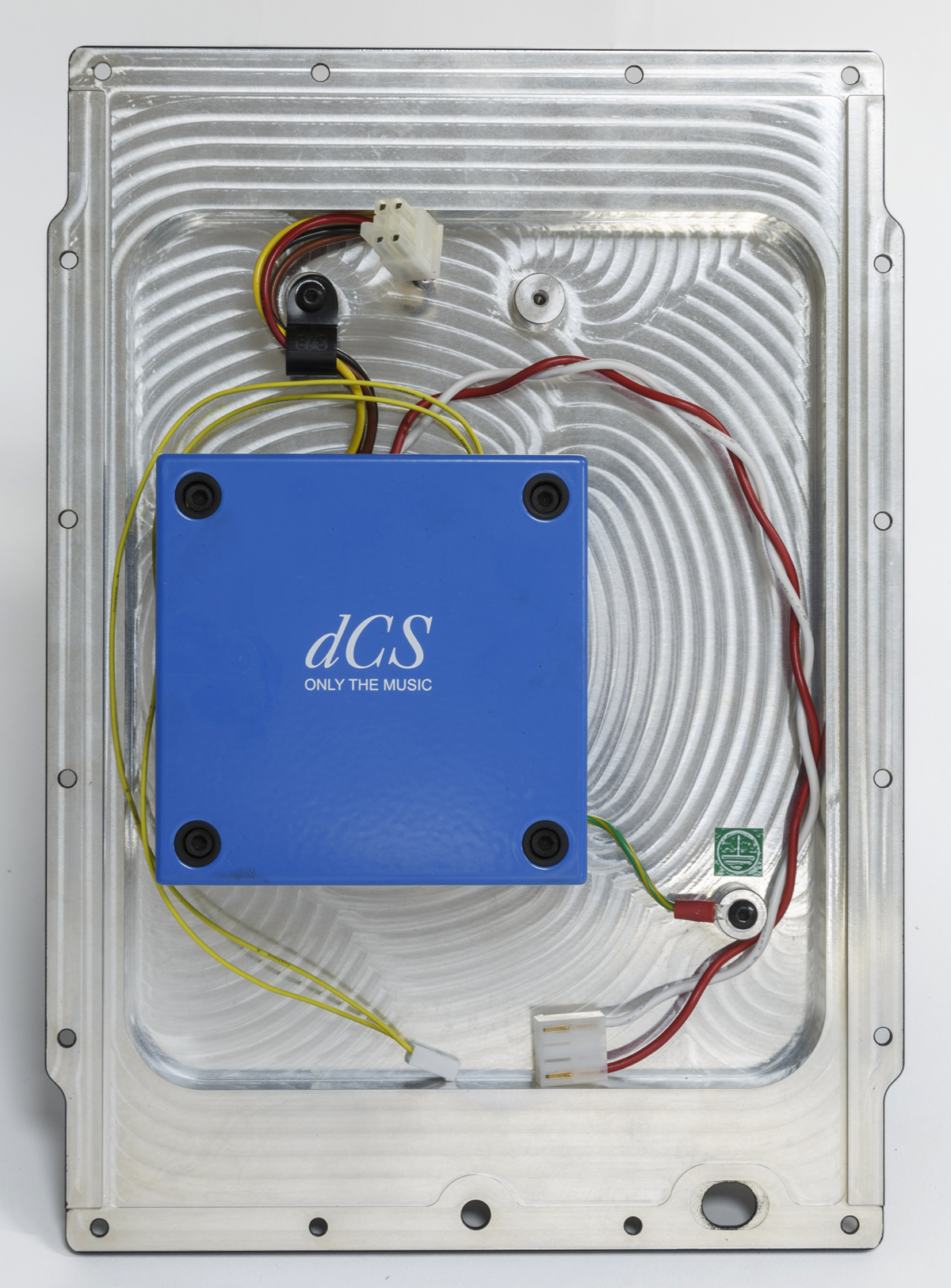
As indicated above there are three sets of inputs on the back panel: 1x stereo pair unbalanced RCA, input impedance 48 kΩ, 1x stereo pair unbuffered balanced XLR, input impedance 24 kΩ, 1x stereo pair buffered balanced XLR, input impedance 96 kΩ for use with low output sources.
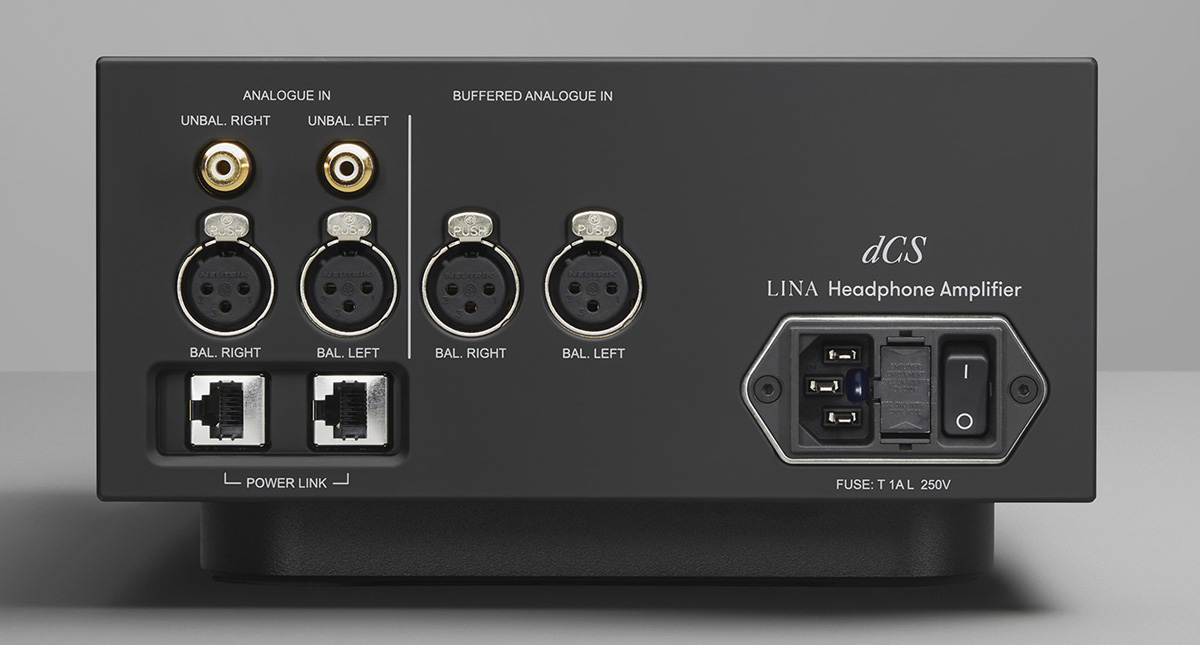
Usually, I prefer tube amplification in my listening session, but the solid-state sound of Lina is on another level from any tube amp currently being used in my home studio. The Lina amp just gets out of the way and opens up to the exceptional uncolored sound.
HiFiMan’s SUSVARA demands great amplification and the general rule is the more power it gets the better the sound. Listening at a low volume setting created a magical experience and it was as if I was listening to SUSVARA for the first time. Inner detail on classical recordings was considerably more detailed than with any other amp at my disposal. I found myself listing at low levels and the SUSVARA was able to achieve the best sound they have ever produced with the Lina System.
The $9100 amplifier while not inexpensive is a top-tier giant capable of achieving maximum performance and with the Ring DAC and Master Clock offered uncolored musical reproduction on a level I never thought could be reached and probably will never be surpassed.
I found myself listening to non-fatiguing sound for long hours into the night no matter what headphones I had plugged in they all performed at higher levels than previously. dCS creates an amplifier that plays music and is at a higher level than any other solid-state design I have auditioned.
Network DAC
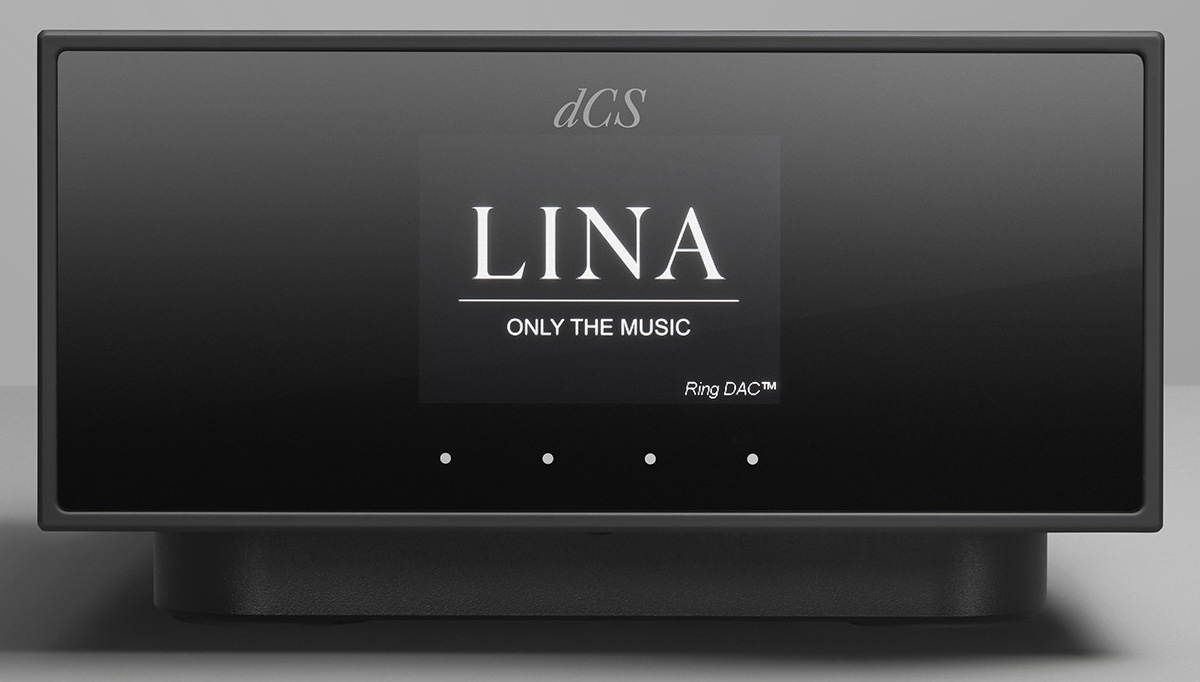
The dCS Ring DAC is the core of the dCS Lina System. Why the Ring DAC is superior to other designs is a rather complex question that in itself could be the subject of a whole white paper, in fact, it is and you can read it here. One key factor to the dCS Ring DAC is the use of Programmable Field Gate Arrays, which means that as dCS improves their software (a constant ongoing process which means that the dCS Ring DAC in the Lina System is an improvement over the original Bartók which was produced only a couple of years ago) you Lina Ring DAC can be upgraded to the current spec (isn’t software wonderful?).
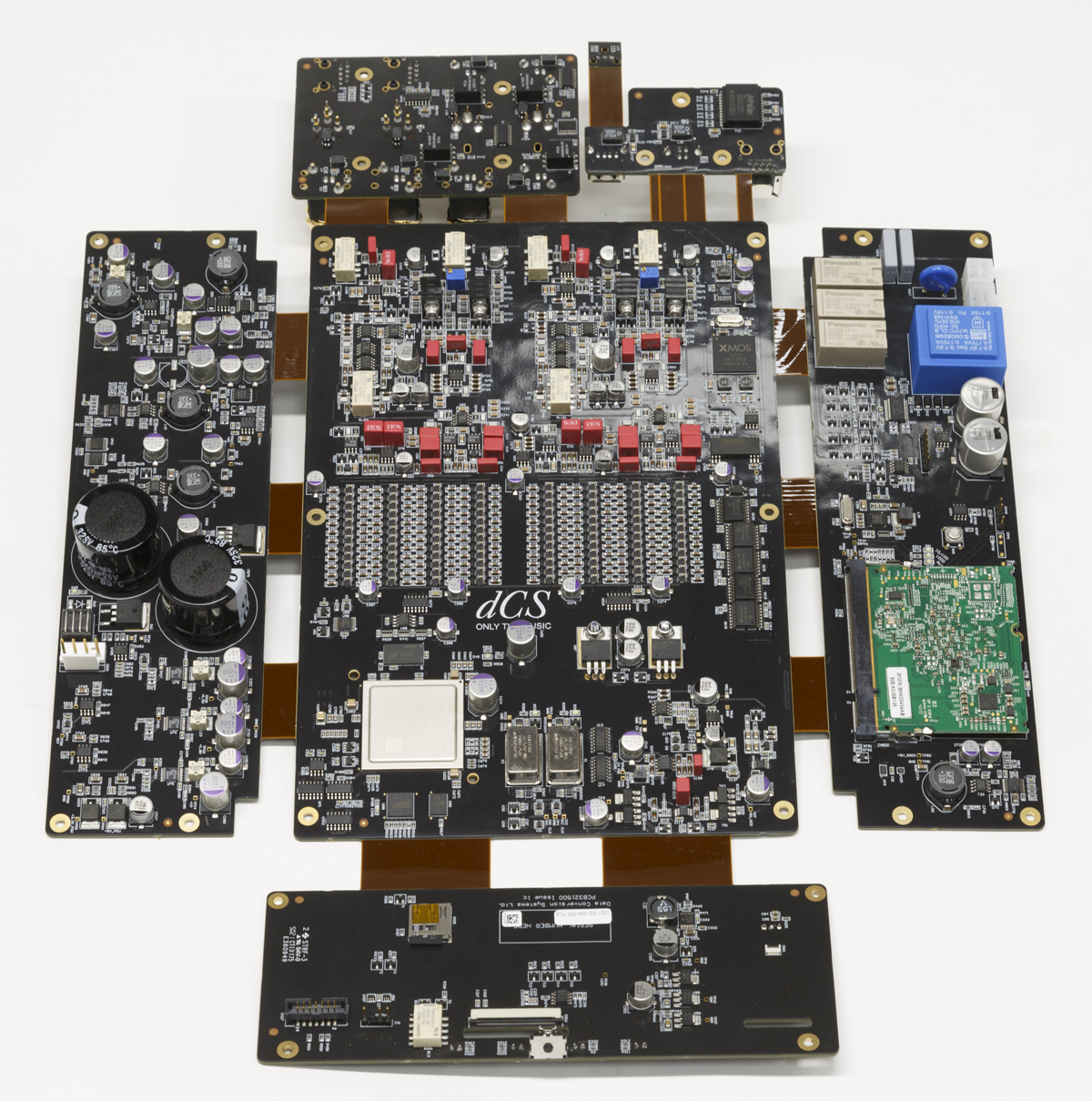
The key features of the dCS Ring DAC are as follows:
• dCS Ring DAC™ system and Digital Processing Platform ensure audio is reproduced with absolute integrity, for a highly detailed, musical, and deeply natural sound
• dCS Mosaic platform supports hi-res streaming via Roon, Spotify, Deezer, Qobuz, TIDAL, Internet Radio, and Apple AirPlay
• Flexible firmware provides unlimited scope for future upgrades, with new features and enhancements delivered via simple software updates
• Patented dCS Expanse technology offers enhanced headphone optimization, for a more natural and immersive experience when listening to a wide range of stereo recordings
• Touch screen UI with customizable menu allows listeners to easily control playback and adjust system settings via seamless navigation [system can also be controlled via dCS Mosaic app]
• All-new electronic and mechanical design delivers a vast range of features in a compact and elegant format
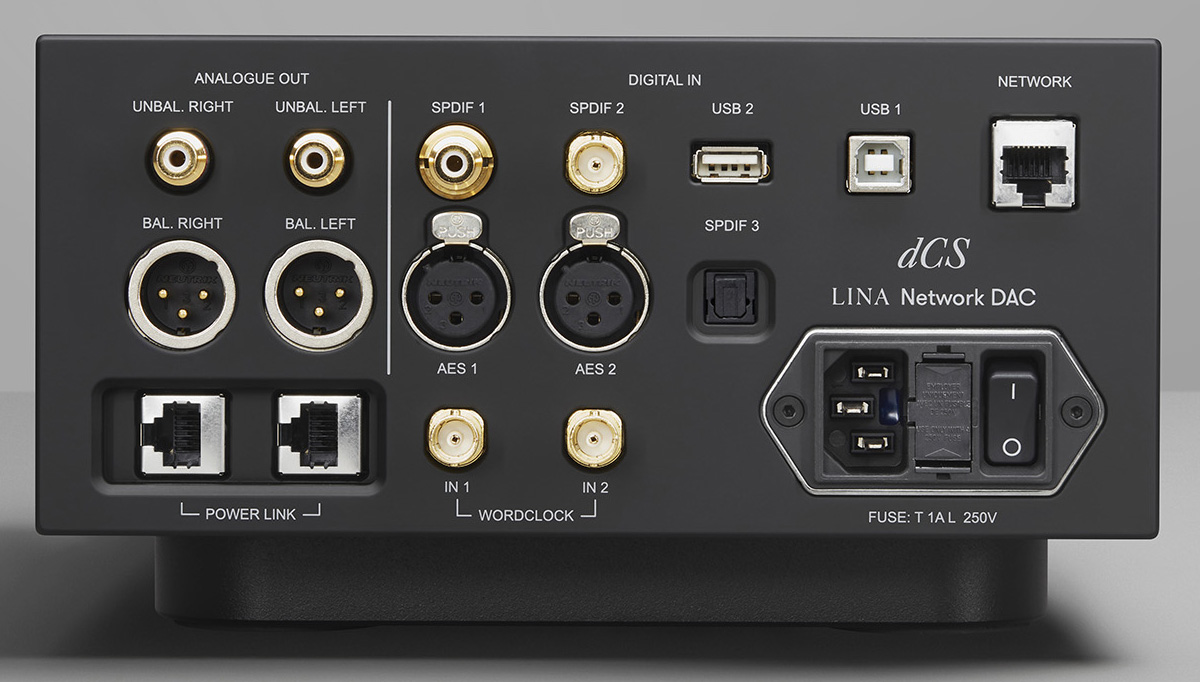
One feature of the Lina Ring DAC that was designed specifically for headphones is dCS Expanse. Expanse is a crossfeed system using multi-stage processing to replicate the sound of a two-channel speaker system with headphones (IE: it converts the stereo signal to a binaural signal), in fact, there are two Expanse filter settings to recreate the soundstage that most appeals to your listening tastes.
Above and beyond the Expanse system, your Lina Ring DAC can be further customized to your personal tastes via three different PCM filters (including MQA) and four different DSD filters (most DACs only offer one), there is also upsampling available to either DSD (1-bit/2.8224MHz) or DXD (24-bit/352.8kHz). There is also a phase reversal switch (digital recordings can often be 180º out of phase which can cause the soundstage to collapse and make the music less impactful). There is even a special “burn-in” cycle to condition your system.
Using the new DAC on a network or via USB produced stellar performance. I found no glitches in the system and using the mosaic app allows for control from a tablet or iPad.
The Lina Ring DAC was able to recognize high-resolution files from Roon, whether I was listening to Qobuz, Tidal MQA, or my personal high-resolution files. Lina always performed flawlessly.
Master Word Clock
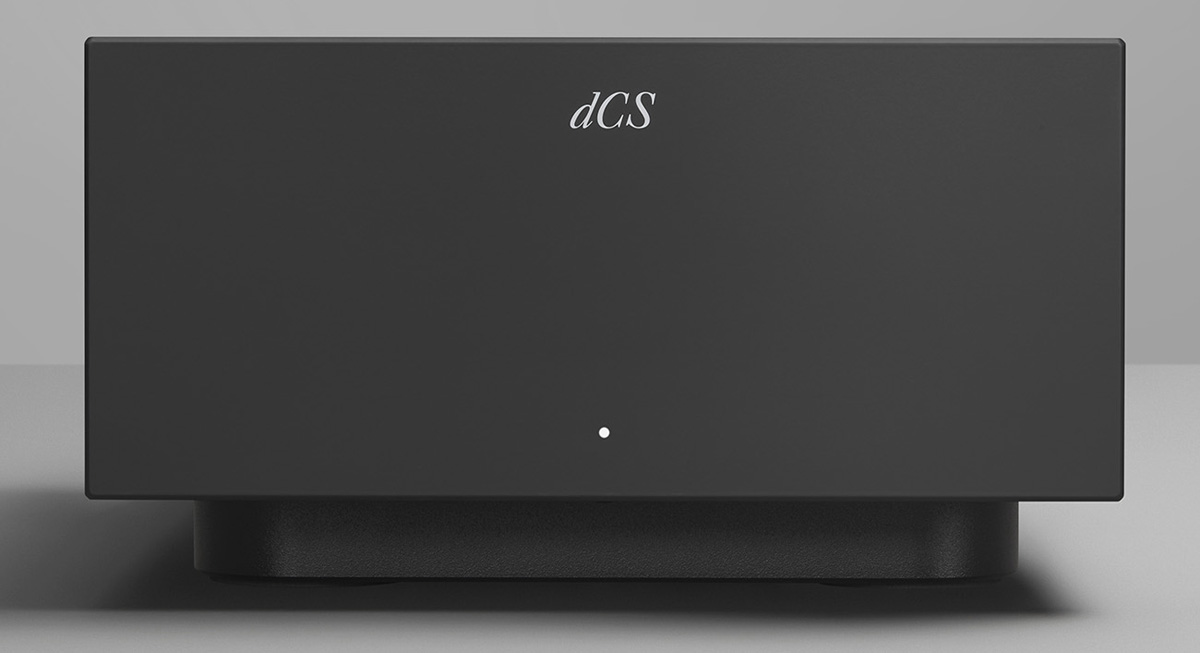
The external Master Word Clock is what dCS built their reputation on and as they would be happy to tell you, something they have been doing for over 30 years. The primary reason for an external Master Word Clock is isolation as there is a lot of digital noise flying around in a multi-processor DAC, and since precise timing is everything your DAC is only as good as your Word Clock.
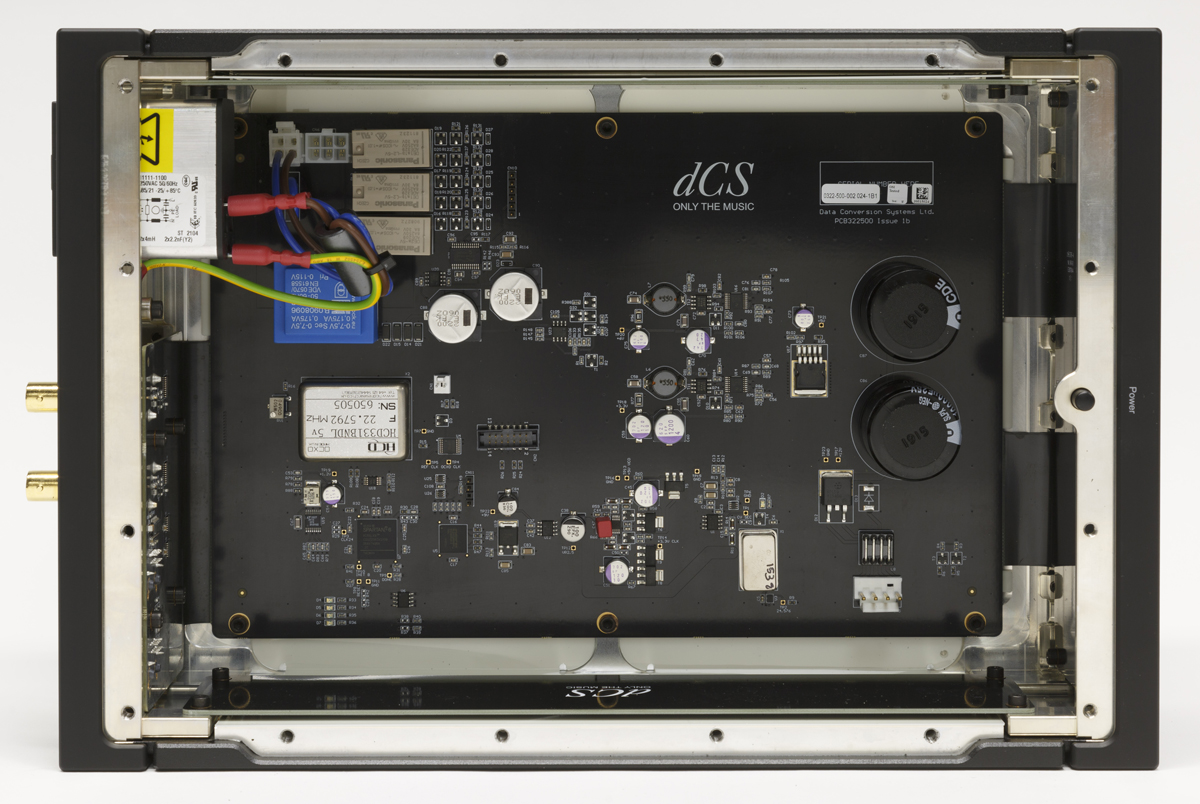
The Lina Master Clock uses two quartz crystals to deliver a precise clocking reference for all audio formats and frequencies. When paired with the Lina Network DAC, it – according to dCS – enhances all aspects of sound – from detail and imaging to rhythmic movement and flow. Each aspect of its design has been carefully crafted to protect against factors that can interfere with clocking signals – ensuring long-term stability and the utmost accuracy during playback.
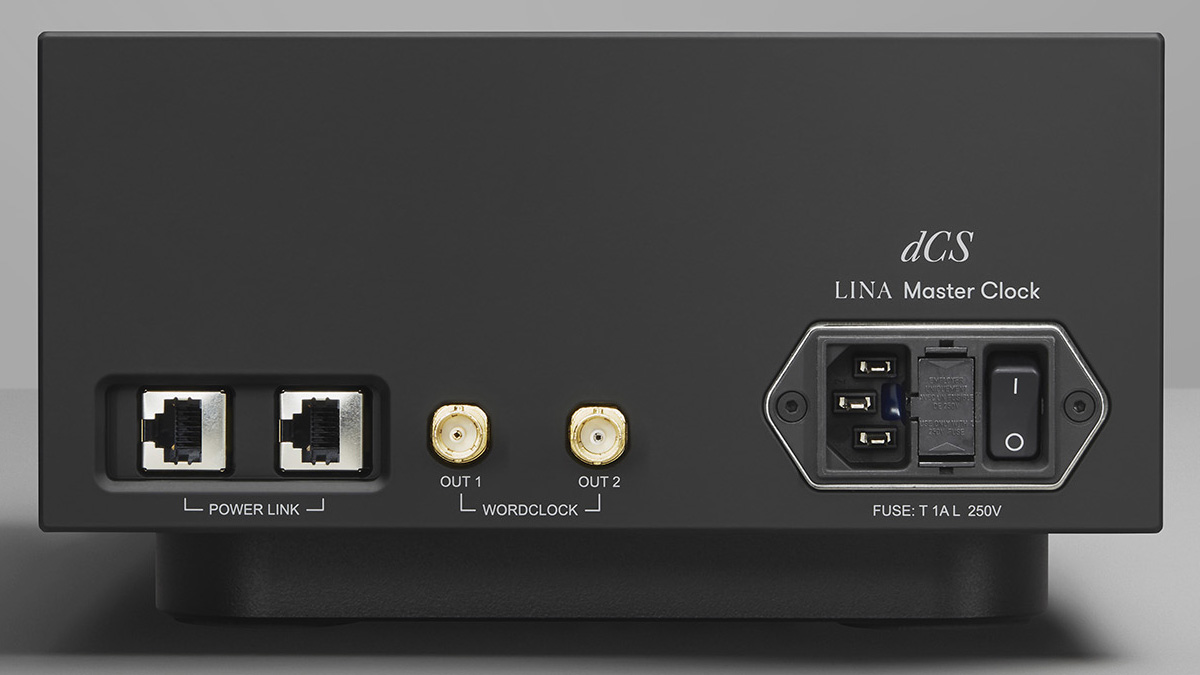
Key Features:
• Allows the Lina Network DAC to be locked to a master reference signal for enhanced audio performance
• Minimizes jitter and irregularities that can cause distortion
• Dual crystal oscillators – one for 44.1kHz sample rates and one for 48kHz – ensure accurate clocking for all audio formats and frequencies
• Standalone design with dedicated chassis and electronics minimizes risk of clock signal interference
• Oven-controlled oscillators ensure a consistent and stable performance, even under changing conditions
• Minimises risk of jitter and delivers a notable increase in sound quality when streaming or listening via USB
• Delivers clock signal accurate to > +/-1 ppm
• Uses proprietary clocking technology refined over three decades, for unrivaled precision and longevity
Listening Impressions.

The HiFiMan SUSVARA is my most expensive headphone and also the most power demanding of all my headphones and was my first choice to test Lina’s power. I chose “New Mozart” with Reinhard Goebel (recorded on the Sony label) to start with as it is one of the best releases I’ve heard this year. “Sinfonia Concertante after Serenade No. 10 in B-Flat Major, K. 361 “Gran Partita”” is a wind instrument performance that is exceptional with layering and detail. The Lina System brought out the best in this recording, I could hear the layering and the musicality was at an entire another level than I was accustomed to hearing. The sound was exceptional and as good as I have heard the SUSVARA sound. Impressive for me was the low-level listening, I never felt as if anything was missing in the performance. I could not believe how effortlessly Lina was driving the SUSVARA and created a low listening performance never previously achieved in any of my systems.
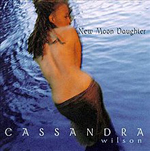
Cassandra Wilson’s performance of “Strange Fruit” from her excellent “New Moon Daughter” album presented in 24-bit/192kHz on Qobuz was my choice for female vocals. Listening through the Dan Clark Audio STEALTH Headphone had an open-sounding soundstage and transparency to die for. The vocal was captivating yet seductive once again even played at low volume. I could hear more detail and her beautiful vocal was free of any sibilance. The soundstage once again was out of my head and appeared to be layered with air and presented good air between the musicians of her excellent band. The Lina was masterful in its ability to extract detail from the brush sound at the beginning of the song and Lina’s treble region once again was masterful and it was captivating.

Alison Krause’s new album with Robert Plant, “Raise the Roof”, is exciting and has well-written compositions. Playing “Quattro” through the Lina System brought the duo’s vocals out in unison and made the recording sound exceptionally live with the beat and vocals coming through without any glare or grunge. Dan Clark worked tirelessly to get the most out of the STEALTH; it was our product of the year in 2021 and is the best-closed headphone I have heard. The Lina showcased how good the STEALTH really sounds, making the soundstage sound larger and more open with astonishing bass and vocal that was as good as it gets from any system. Once again, I was totally impressed with the Lina’s performance.

The LCD-5 from Audeze is another testament to the design by Sankar. Plugging in “Springsteen Live on Broadway” and listening to “Tenth Ave Freeze-out” through the LCD-5 through the Lina is as if Springsteen has taken center stage and you have been placed in the fourth row and treated to a live performance. “Tenth Ave Freezeout” is the song that introduced legendary Sax player Clarence Clemmons to the E Street Band. The sound is emotional for Springsteen delivering the best performance I have heard of this song and Lina brought me to the party. With my eyes closed, I could see Springsteen on the stage and it was as if I was there. The Lina recreates the theater room acoustics superbly.

Further proving the great versatility of the Lina, the Grado PS2000E delivered a performance that was exceptional and uncompromised while rocking to Joe Bonamassa’s “Live at the Sydney Opera House” album. Blues at its finest and reminiscent of Steven Van Zandt. Bonamassa’s guitar playing was magnificently delivered on Lina.

Listening to “Comfortably Numb” from “The Wall” had me enamored with the rhythm of the PS2000E and how good it sounded with David Gilmour’s guitar playing; The Grado was able to deliver stellar performance with the Lina system and one that I enjoyed immensely.


Meze’s Elite was another beautiful sounding headphone that had the live feeling while listening to jazz giant Gregory Porter on his “Revival Song” from his stellar “Get Through It“ album. The fast rhythm and timing the Lina brought out in Porter’s RnB sound were amazing. The Meze Elite was on another plane. Super-fast speed from the Lina produced another musical listening experience. Fast and beautifully reproduced with razor-sharp imaging it created another of the many wow moments while listening to this system. Amazing!!!
Final thoughts
The Bartók was my first personal audio introduction dCS and I was totally enamored with the system. I really felt a little void when it left my home. The Lina is a super stepped-up system that exceeds the performance of the Bartók. The Bartók integrated headphone amplifier while terrific does not have the inner workings of this from-the-ground-floor-up Lina, and the Ring Dac is now complete with the external Master Word Clock.
dCS spent two years in R&D and it is evident in the significant step-up in performance that Lina was able to deliver. The Lina with its stackable components surpasses the Bartók and is therefore significantly higher in price. The thee pieces will require an investment of $29,150 US dollars. Some of this is accounted for due to parts costing more today because of the shortage worldwide and shipping costs also have more than doubled. On the other hand, true audiophiles will feel the money well spent.
If you’re looking for the very best in digital reproduction Lina delivers and dCS is committed to their customers ensuring your investment is future-proof and always releases firmware upgrades when improvements have been made.
The dCS Lina creates a sound previously unheard in a headphone system. The stellar performance is amazing and completely blew me away with its transparency and uncolored sound. Designed as separates you can purchase the Headphone amplifier and DAC without the clock and still be satisfied with the sound. Either way, it allows you to fit the components into your budget.
After one month of intensive listening to the dCS Lina, I have not listened to my 2-channel loudspeaker system once. Delivering a magical no fatiguing experience at a level, I never thought possible this is an easy recommendation. I can’t see myself without the Lina in my home studio. Folks this is truly a game-ending system designed with the highest digital processing and uncolored sound available. Many systems cost more but none deliver what Lina delivers, a total listening experience for the ages. Big thumbs up and my highest recommendation.
For those interested in a complete walkthrough of the system here is a short video by Drew at Moon Audio exclusive distributor of the dCS Lina in the US:
Manufacturer’s Website:
Price:
Lina Headphone Amplifier $9,100 USD
Lina Network DAC $12,750 USD
Lina Master Clock $7,300 USD
Full System $29,150 USD
Lina Headphone Amplifier Specifications:
| Electronics | • Pure analog design • Automatic voltage switching |
| Power Output | • 2x Balanced 2W into 30Ω • 2x Balanced 0.48W into 300Ω • 2x Unbalanced 1.6W into 30Ω • 2x Unbalanced 0.2W into 300Ω |
| Frequency Response | 1Hz-100kHz better than +0/-3dB |
| THD+N | <0.005% @ 1kHz 6V rms balanced output into 30Ω (80kHz bandwidth) |
| Channel Separation | Balanced input to balanced output into 30Ω. Better than 100dB @ 1kHz. Better than 80dB, 20Hz–20kHz |
| Signal to Noise Ratio | 110dB 20Hz-20kHz A-weighted (referenced to 6V rms balanced input and output) |
| Analog Inputs | • 1 x stereo pair unbalanced RCA, input impedance 48kΩ • 1 x stereo pair unbuffered balanced XLR, input impedance 16kΩ • 1 x stereo pair buffered balanced XLR, input impedance 96kΩ |
| Headphone Outputs | • 1 x dual 3-pin balanced XLR, right and left channel • 1 x single 4-pin balanced XLR • 1 x single ¼” (6.35mm) headphone jack |
| Power | 90-120v & 230-240v, 50/60Hz nominal |
| Power Link | (synchronising on/off state with other products) 2 x RJ45 |
| Finish | Black machined aluminium |
| Included with your Lina Headphone Amplifier | 1 x mains cable [2m] 1 x Power Link cable [0.5m] |
| Product Dimensions/ Weight | 121.5mm (H) x 220mm (W) x 356mm (D) / 7.5kg |
| Shipping Dimensions/ Weight | 320mm (H) x 360mm (W) x 530mm (D) / 9kg |
Lina Network DAC Specifications:
| Electronics | • dCS Ring DAC and Digital Processing Platform on flex ridged PCB • Stream Unlimited S800 • Automatic voltage switching |
| Digital Inputs | • 2 x AES/EBU on 3 pin XLR 44.1-384kS/s • 1 x S/PDIF BNC Coax 44.1-192kS/s • 1 x S/PDIF on RCA 44.1-192kS/s • 1 x Toslink 44.1-96kS/s • 1 x USB Type B 44.1-384kS/s, PCM and DSD, DSDx2 in Async Mode • 1 x USB Type A connector for mass storage devices (navigated using Mosaic) |
| Analog Outputs | • 1 x stereo pair 3 pin balanced XLR • 1 x stereo pair unbalanced RCA |
| Streaming Compatibility Supports the following platforms and services | • UPnP • Qobuz • Deezer • Tidal • Internet Radio • Spotify • Apple AirPlay 2 (support at 44.1 or 48kS/s) • RoonReady |
| Sample frequencies and formats Supports the following audio formats and sample rates | • 44.1-384kHz • DSD 64, 128 • Native DSD + DoP (input dependent) • FLAC, WAV, AIFF, MQA |
| Upsampling | Multi-stage DXD oversampling with switchable DSD |
| Word Clock | • 2 x Word Clock inputs on 75 Ω BNC connectors • Will lock to 44.1-192kHz |
| Filters | • PCM mode: 2 filters + MQA • DSD mode: 4 progressive filters |
| Crossfeed Settings | • Standard crossfeed • dCS Enhanced crossfeed (E1) • dCS Enhanced crossfeed (E2) |
| Frequency Response (set to filter 1) | • Fs = 44.1 or 48kS/s +/-0.1dB, 10Hz-20kHz • Fs = 88.2 or 96kS/s +/-0.1dB, 10Hz-20kHz -3dB @ >38kHz • Fs = 176.4 or 192kS/s +/-0.1dB, 10Hz-20kHz -3dB @ >67kHz • Fs = 352.8 or 384kS/s +/-0.1dB, 10Hz-20kHz -3dB @ >100kHz • DSD64 +/-0.1dB, 10Hz-20kHz -3dB @ >90kHz • DSD128 +/-0.1dB, 10Hz-20kHz -3dB @ >100kHz |
| Residual Noise (6v output setting) | • 16-bit data: Better than –96dB0, 20Hz-20kHz unweighted • 24-bit data: Better than –113dB0, 20Hz-20kHz unweighted |
| Spurious Responses | Better than –105dB0, 20Hz-20kHz |
| L-R Crosstalk | Better than –115dB0, 20Hz-20kHz |
| Network Interface | RJ-45 connector |
| Power | IEC inlet & power switch on rear panel • 90-120v & 220-240v, 50/60Hz nominal • Automatic voltage switching • Power synchronized with other dCS control link products (RJ45) |
| Included with your Lina Streaming DAC | • 1 x mains cable • 2 x XLR [0.5m] • 1 x Ethernet cable [2m] • 1 x Power Link cable [0.5m] |
| Finish | Black machined aluminium with crystal LED display |
| Product Dimensions / Weight | 121.5mm (H) x 220mm (W) x 339mm (D) 7.4kg |
| Shipping Dimensions / Weight | 320mm (H) x 360mm (W) x 530mm (D) / 10.3kg |
Lina Master Clock Specifications:
| Clock Type | Grade 1 Master Clock, with oven-controlled crystal oscillators |
| Clock Accuracy | Better than +/-1 ppm when shipped over an ambient temperature range of +5°C to +45°C |
| Startup Time | Typically 10 minutes to rated accuracy |
| Word Clock Outputs | • 2 x independently buffered TTL-compatible output on 75Ω BNC connectors • Output 1: fixed at 44.1kHz • Output 2: fixed at 48kHz |
| Power Link (synchronizing on/off state with other products) | 2 x RJ45 |
| Power | • 90-120v & 220-240v, 50/60Hz nominal • Consumption 10W |
| Included with your Lina Master Clock | 1 x Mains cable [2m] 1 x Power Link cable [0.5m] 2 x BNC [0.5m] |
| Finish | Black machined aluminium |
| Product Dimensions / Weight | 121.5mm (H) x 220mm (W) x 339mm (D) / 7kg |
| Shipping Dimensions / Weight | TBC |














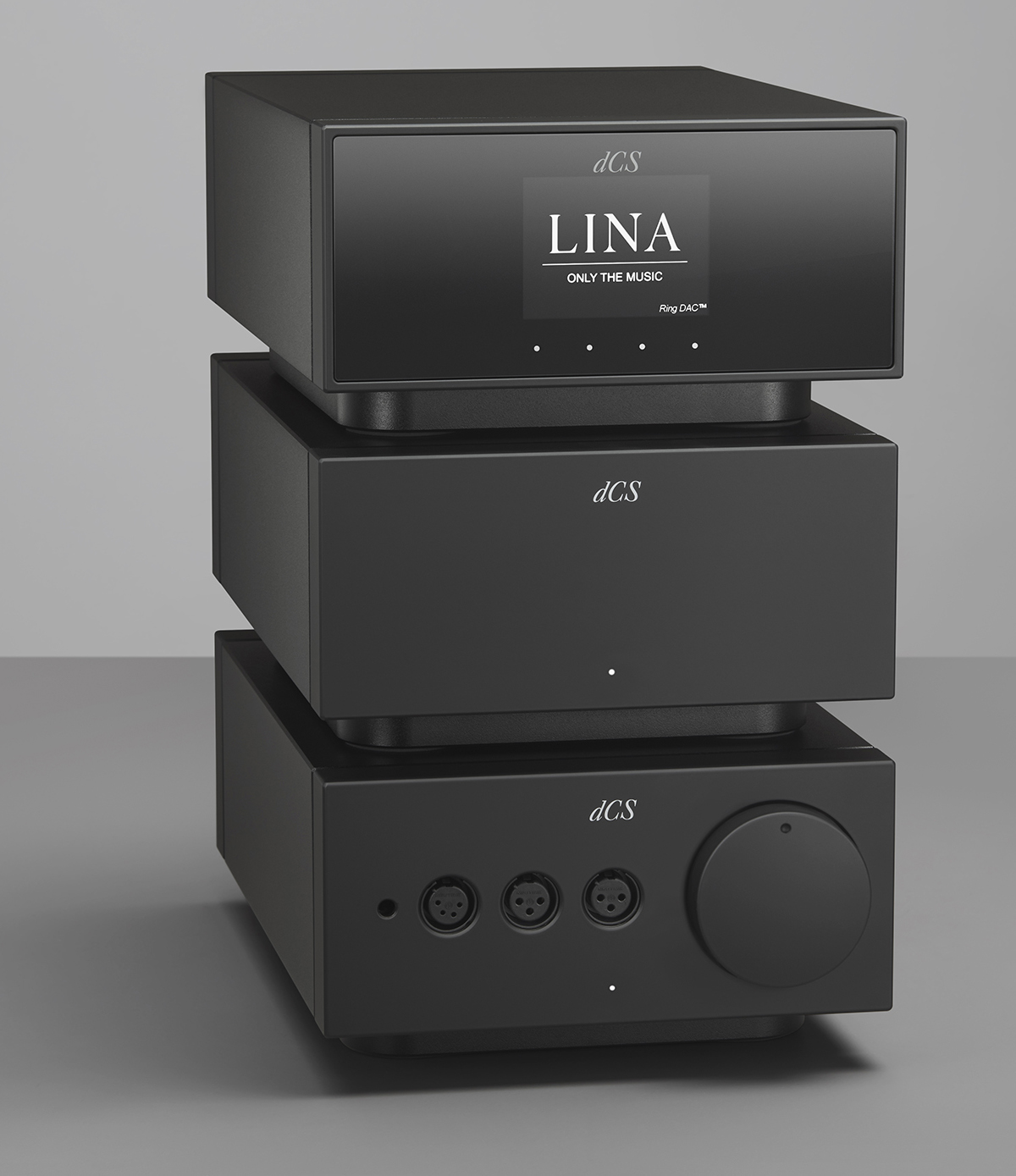
Want to join discussion?
Feel free to contribute!